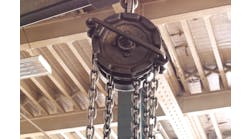“The product value goes from $60/ton of coke to $850/ton of petrochemicals. And you reduce water consumption because you don’t need it to cut the coke out.” Honeywell UOP’s Carrie Eppelheimer discussed the new product mix of tomorrow’s refinery, which leans more toward petrochemicals than fuels.
The future may or may not bring flying cars, robot servants and immortality, but it’s bringing exciting changes to the business of refining petroleum. Those changes are opportunities to earn higher profits for plants that recognize how to leverage existing technologies to improve flexibility, integration and communication.
Integrated refineries and petrochemical plants are the “Refineries of the Future,” said Carrie Eppelheimer, vice president of strategy and marketing, Honeywell UOP, in her session at Honeywell Users Group Americas 2019, this week in Dallas. Integrating petrochemical capabilities helps refineries “Get the maximum value out of every drop of crude oil, and respond to market drivers.”
Those drivers include a new regulatory environment. On January 1, 2020, the International Maritime Organization (IMO) will implement a new regulation for a 0.50% global sulfur cap for marine fuels. The industry expects this could drive the price of high sulfur fuel oil $20 to $40 per barrel lower than the price of crude oil.
Instead, “High-sulfur bunker fuel is a feedstock we can convert to higher value products,” said Eppelheimer. “Should we convert it to gasoline or diesel? The answer is obvious when one price is higher, but what if both are declining? The best answer may be to convert it to petrochemicals—ethylene, propylene, etc.”
Integration on the rise
However, the United States lags behind other countries in integrating refining and petrochemical complexes. “Today, refiners can continue to export higher sulfur, higher benzene, and higher RVP gasoline to Africa and Latin America,” Eppelheimer said. But the export market is always changing because, as small economies grow, and fuel demand reaches the level to support a 250,000 bbl/day refinery, the country usually invests in local fuel refining and production. Often these plants also produce petrochemicals.
Integrated refining and petrochemical plants are expanding in the U.S. as well. There’s still a demand for exported gasoline, and more refineries are adding production for propylene and ethylene, as well as and naphtha for export. “We used to have separate facilities and ship between them, but now we’re seeing more integrated plants.” “This trend isn’t just a paper exercise. The plants are real. Five years ago for example, only 15% of Honeywell UOP’s CCR Platformers were designed to produce petrochemicals. The rest were designed to produce fuel. In 2018, over 65% were designed for petrochemicals.” “We use six metrics to drive higher efficiencies in refineries,” Eppelheimer said. These include:
- Carbon: "Use every molecule of carbon processed in the plant.”
- Hydrogen: "Minimize the number of times we add or remove it” from a hydrocarbon.
- Utilities: "Using less energy saves money and reduces the CO2 footprint.”
- Emissions: Greenhouse gases, particulate emissions, SOx, NOx, and more.
- Water: "It’s a scarce resource. In the Middle East and India, they often must desalinate the water, and even in the U.S., there are shortages due to regional droughts.”
- Capital: Maximize return.
From refinery to petrochemical in three steps
“We look at the six efficiencies and optimize them for you,” Eppelheimer said of Honeywell UOP’s work with oil and gas companies. For example, a typical delayed coker or FCC refinery may chose a phased approach to get from gasoline to petrochem. The first phase is to replace the delayed coker with a slurry hydrocracker. “The product value goes from $60/ton of coke to $850/ton of petrochemicals. And you reduce water consumption because you don’t need it to cut the coke out.”
Next, add an aromatics complex to produce paraxylene, benzene and toluene. “Finally, go into propane dehydrogenization and steam cracking,” Eppelheimer said. “I like to think of the propane dehydrogenation unit as a hydrogen machine that just happens to produce propylene. This provides hydrogen to feed back into the hydrocracking processes.”
With these additions under Honeywell UOP guidance, a refinery can move from $20/bbl to $50/bbl net cash margin, Eppelheimer said. The facility can become flexible (can change product mix), integrated (giving high margins and value), and connected.
Connecting the plant is particularly important. “Some 50% of skilled workers will retire within the next seven years,” Eppelheimer said. That means fewer skilled workers even as increasingly integrated operations become more complex. “Our answer is to upload your data to a secure cloud environment and compare actual operating data to an optimal digital twin of your plant., This allows 24/7/365 comparison of actual to optimal performance to identify in real time the changes you can make to maximize return. This means our incentives are aligned, so your best day is also our best day.”





